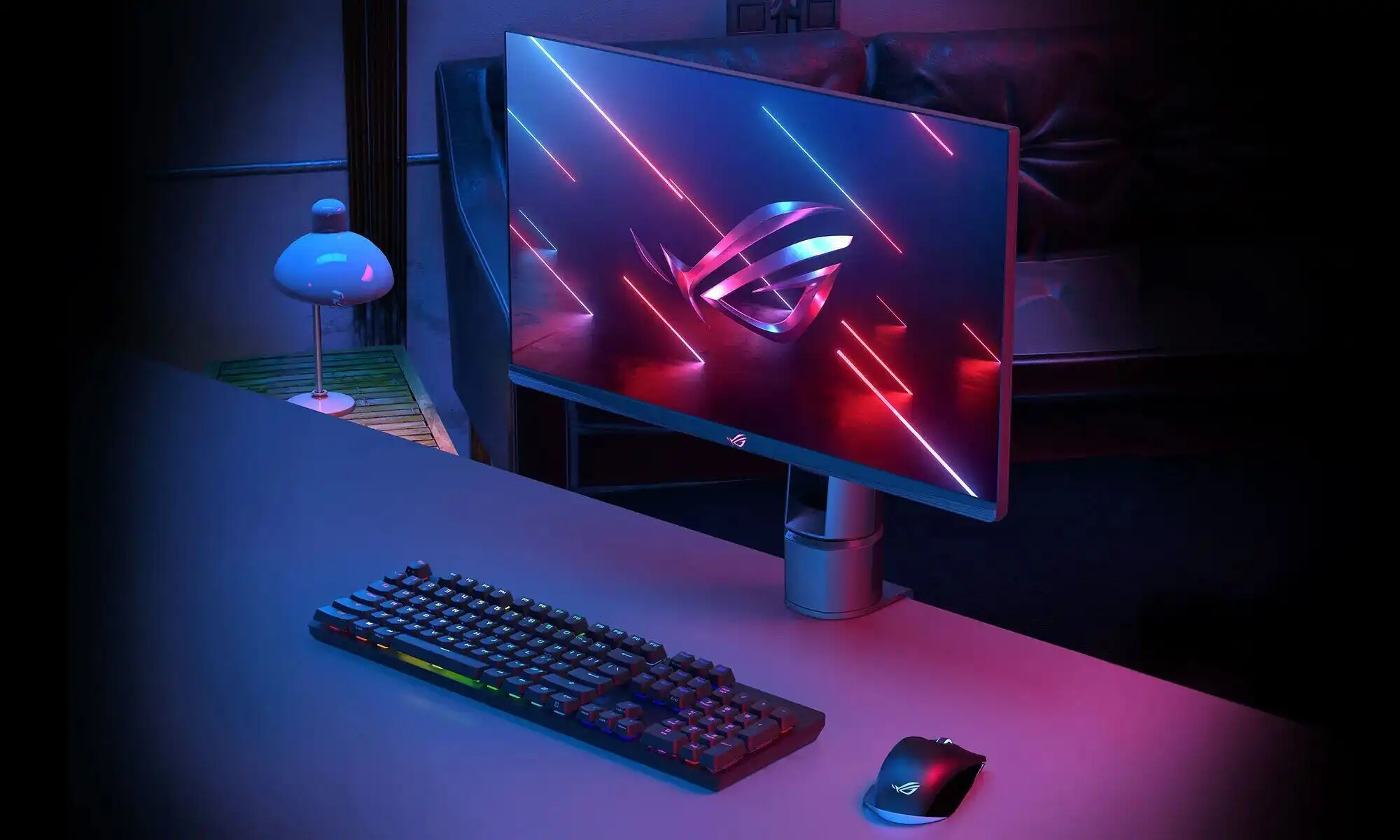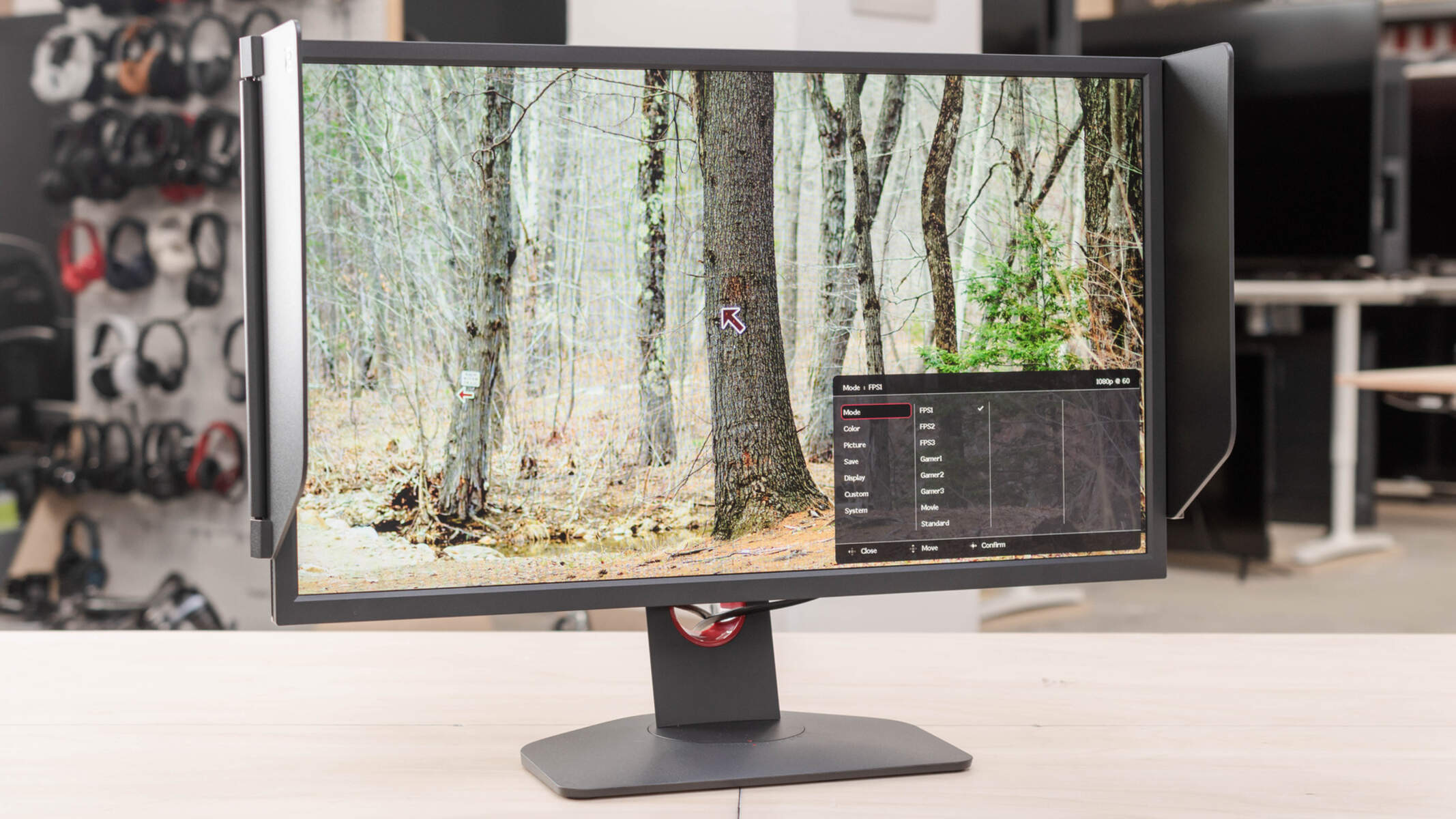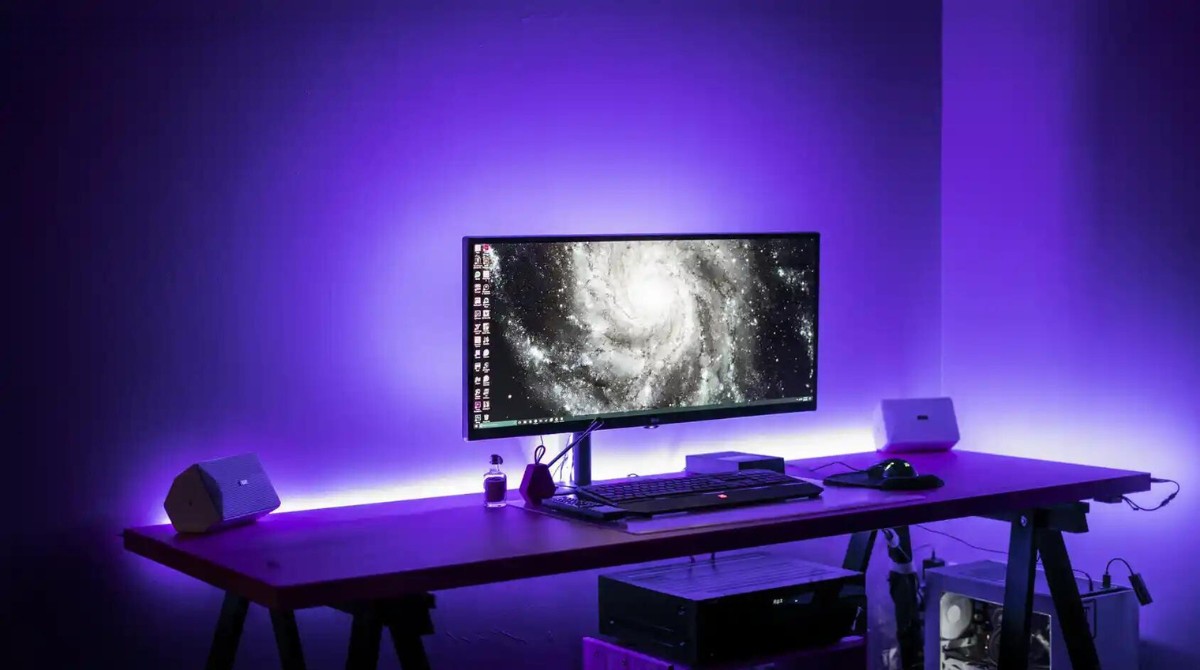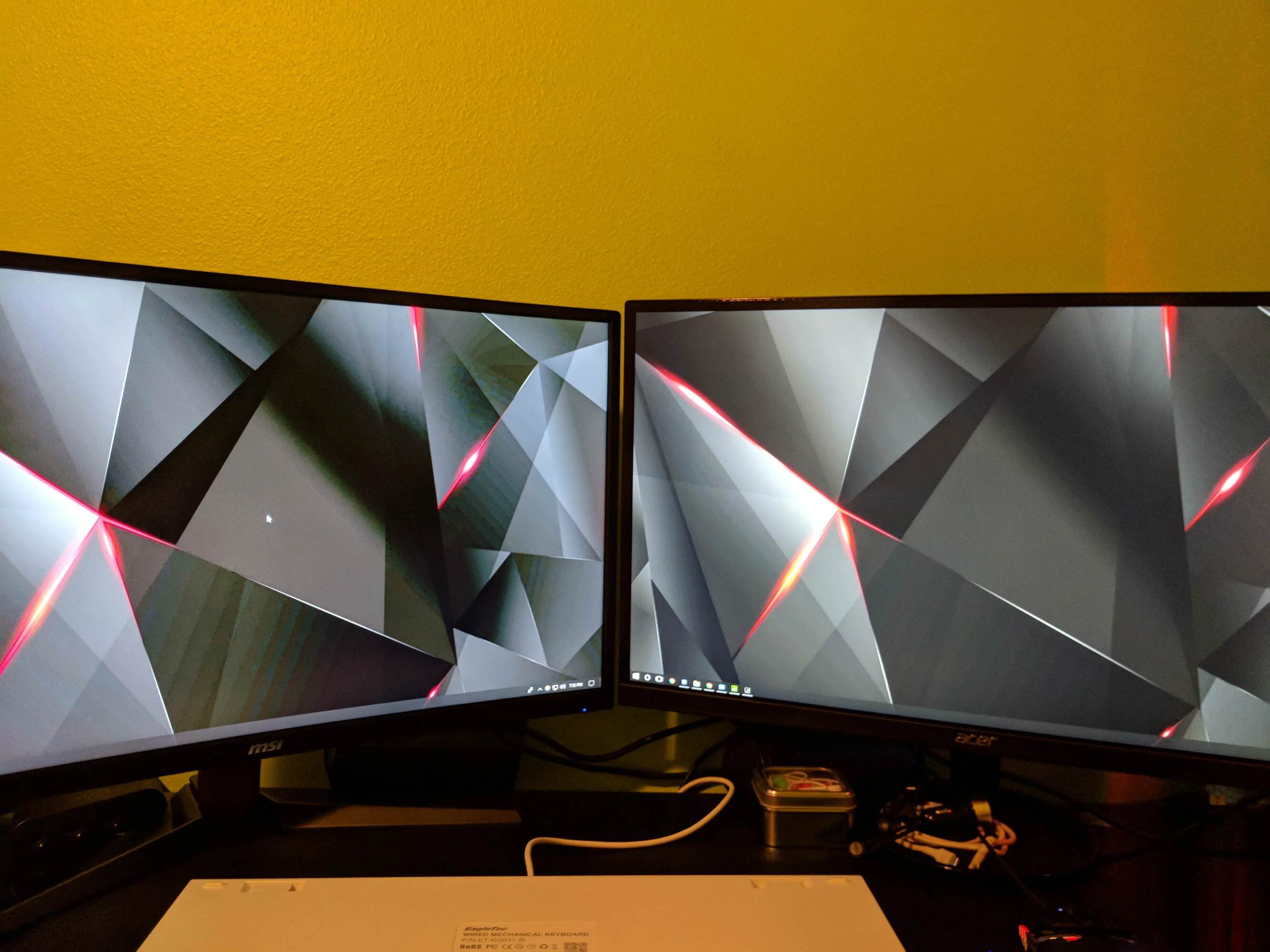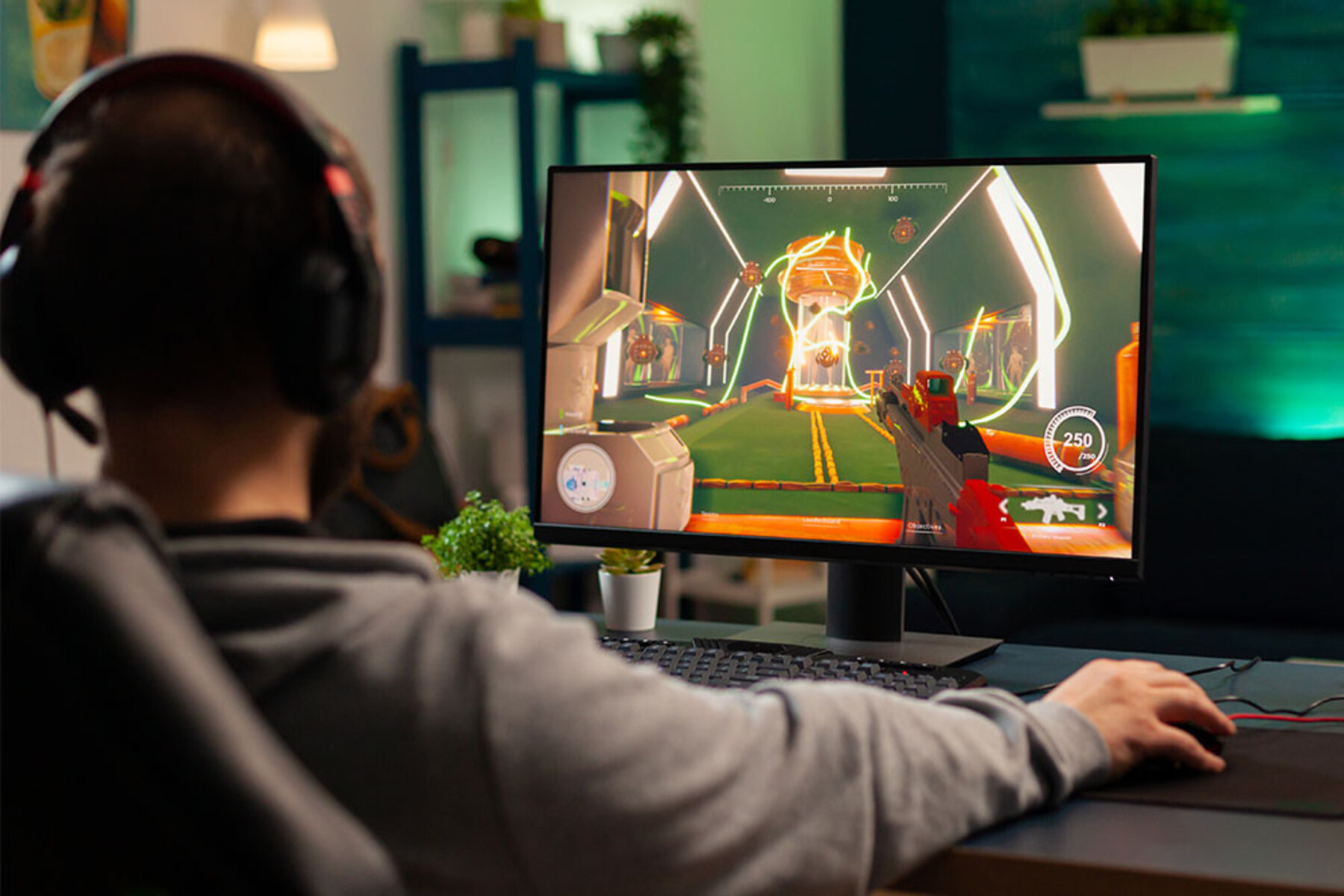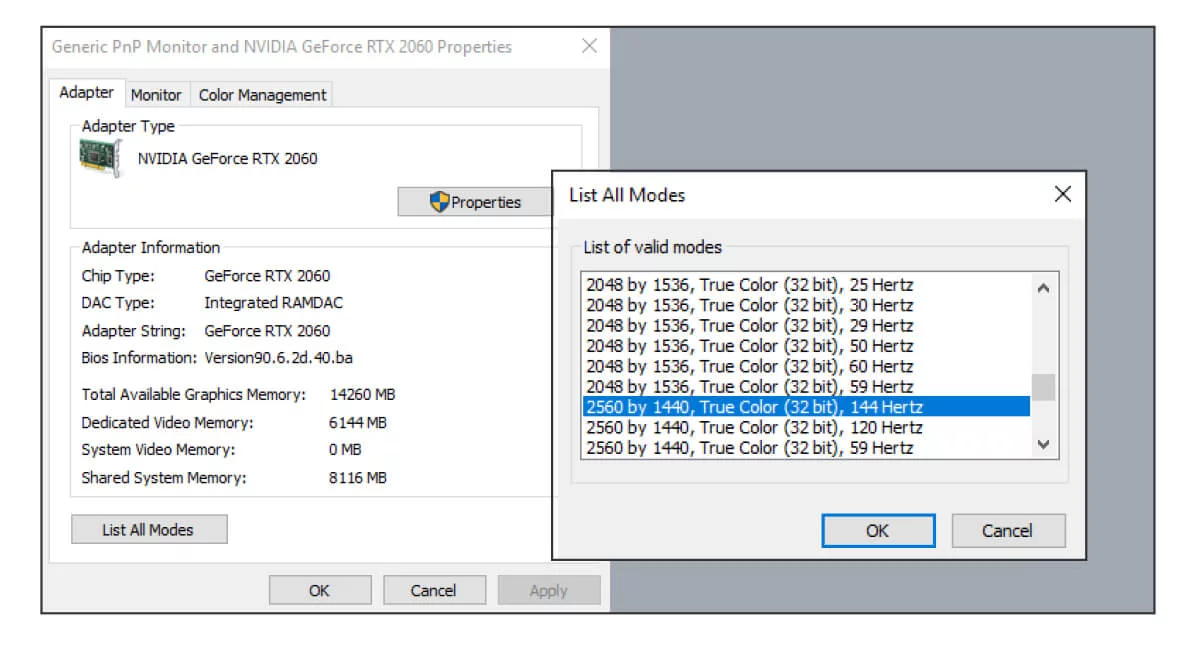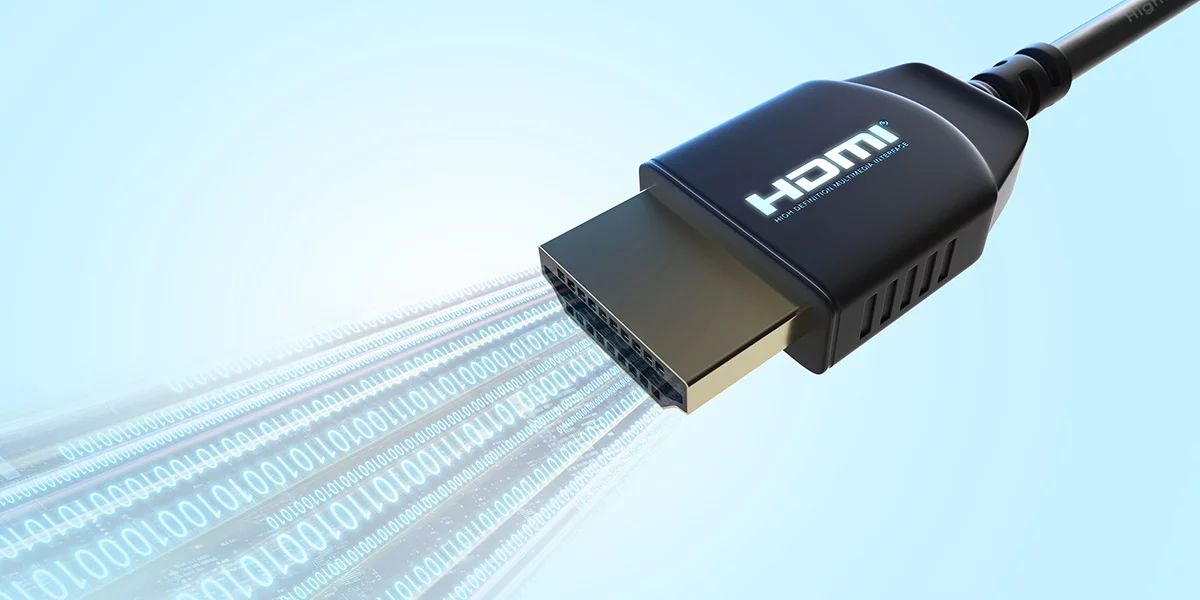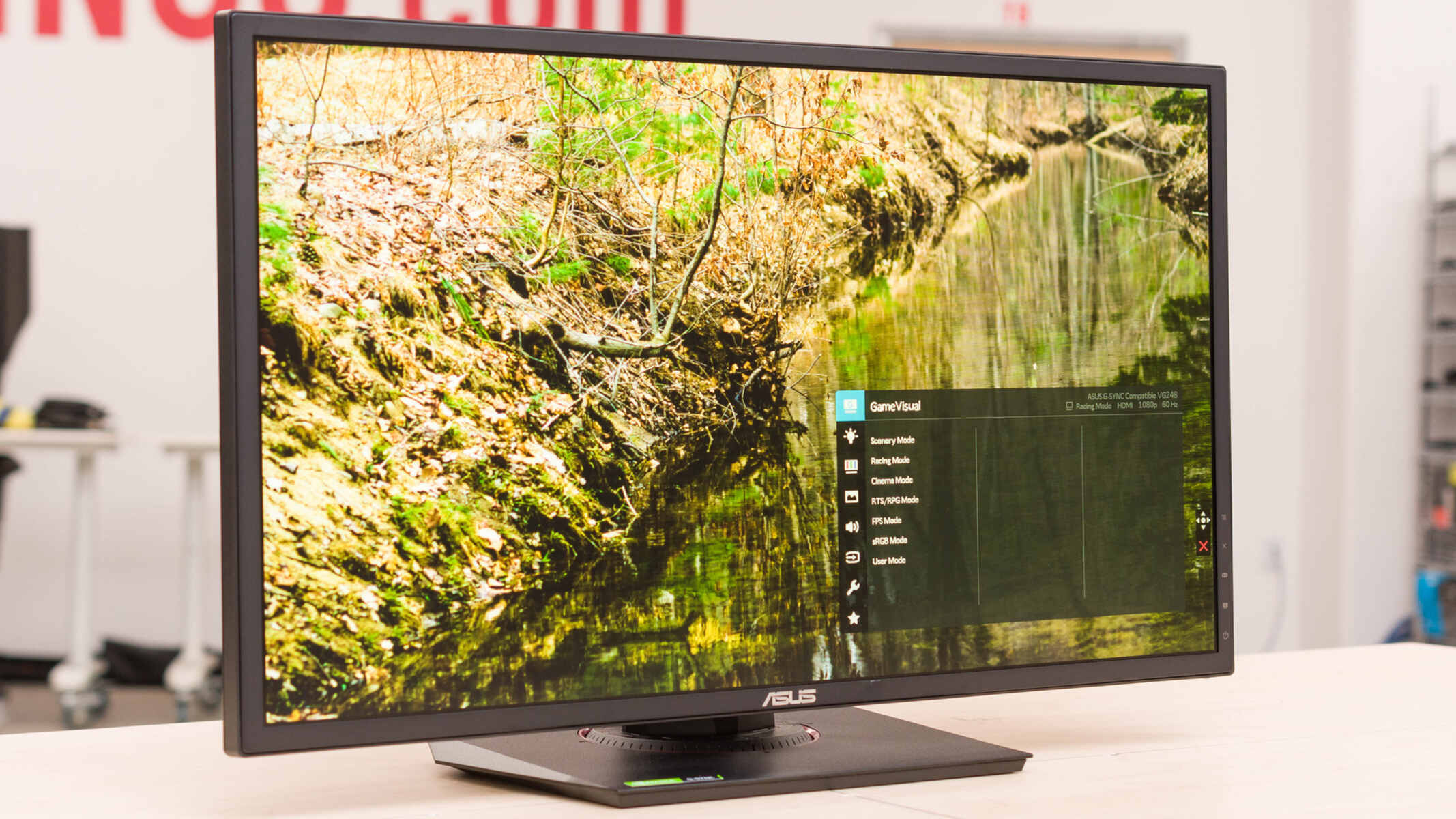What is Refresh Rate?
The refresh rate of a monitor refers to how many times the display refreshes or updates the image on the screen in one second. It is measured in Hertz (Hz). A higher refresh rate means that the monitor can refresh the image more times per second, resulting in smoother and more fluid motion.
Think of it as the number of frames per second (FPS) that the monitor can display. Just like how a movie consists of a series of still frames played in quick succession to create the illusion of motion, a higher refresh rate allows for more frames to be displayed per second, leading to a more seamless and lifelike visual experience.
Common refresh rates for monitors include 60Hz, 75Hz, 120Hz, and even higher. The standard refresh rate for most monitors is 60Hz, but in recent years, higher refresh rates have become more popular, especially for gaming.
It’s worth noting that the refresh rate of a monitor is not the same as the frames per second (FPS) that a game or application can achieve. While the refresh rate determines how many times the monitor can display a new image per second, the FPS is dependent on the performance of the game or application and the capabilities of the computer’s graphics card. However, a higher refresh rate can still have a noticeable impact on the overall gaming experience.
In the next section, we will explore how the refresh rate is measured and its relationship with frames per second (FPS), which is crucial for understanding why a high refresh rate matters for gaming.
How is Refresh Rate Measured?
The refresh rate of a monitor is measured in Hertz (Hz), which represents the number of times the screen refreshes in one second. It is an essential specification to consider when purchasing a new monitor, especially for gaming enthusiasts who value smooth and seamless gameplay.
To better understand how refresh rate works, let’s use an example:
If a monitor has a refresh rate of 60Hz, it means that the screen can refresh the image 60 times in one second. Similarly, a monitor with a refresh rate of 120Hz can refresh the image 120 times per second, providing an even smoother visual experience.
It’s important to note that the refresh rate of a monitor is predetermined by its hardware capabilities. Unlike FPS, which can be adjusted through software settings or in-game options, the refresh rate is a fixed value for a given monitor model.
Most monitors on the market today have a default refresh rate of 60Hz. However, with advancements in technology, we now have monitors with higher refresh rates available, such as 75Hz, 144Hz, and even 240Hz. These higher refresh rates offer an even more immersive gaming experience by reducing motion blur and improving overall responsiveness.
It’s important to mention that achieving higher refresh rates also requires a capable graphics card to support it. While a monitor may be capable of a high refresh rate, if the graphics card cannot keep up with the demand, the benefits may not be fully realized.
In the following section, we will explore the relationship between refresh rate and frames per second (FPS), which helps to further understand the significance of a high refresh rate for gaming.
The Relationship Between Refresh Rate and Frames Per Second (FPS)
The relationship between refresh rate and frames per second (FPS) is crucial to understanding why a high refresh rate matters for gaming. While they are related, they are not the same thing.
FPS refers to the number of frames that a graphics card can render per second in a game or application. It is a measure of the smoothness and fluidity of the gameplay. The higher the FPS, the smoother the gameplay will be. Most games target 60 FPS as the minimum acceptable standard for a smooth gaming experience.
On the other hand, the refresh rate of a monitor represents how many times the screen can refresh or display a new image per second. A higher refresh rate allows the monitor to update the image more frequently, leading to smoother motion and a more realistic visual experience.
So, what is the relationship between these two? The refresh rate of a monitor sets the upper limit for the FPS that can be displayed. For example, if your monitor has a refresh rate of 60Hz, it can display a maximum of 60 FPS on screen, even if your graphics card is capable of producing more frames.
However, having a higher refresh rate than the FPS can still provide benefits. It allows for a more immediate display of the frames that are available, reducing the delay between the frames being rendered and shown on the screen. This results in smoother motion, reduced motion blur, and improved responsiveness.
For gamers, achieving a high FPS that matches or exceeds the refresh rate of the monitor is ideal. This ensures that the full potential of the monitor’s refresh rate is utilized, resulting in the smoothest and most immersive gaming experience.
In the next sections, we will explore the specific benefits of a high refresh rate for gaming, including smoother gameplay, reduced motion blur, better responsiveness, and improved visuals and immersion.
Benefits of a High Refresh Rate for Gaming
A high refresh rate offers several advantages for gamers, enhancing the overall gaming experience and providing a competitive edge. Let’s explore the key benefits of a high refresh rate:
Smoother Gameplay and Reduced Motion Blur
One of the primary benefits of a high refresh rate is the ability to display more frames per second, resulting in smoother gameplay. With a higher refresh rate monitor, each frame is displayed more frequently, reducing the perceived motion blur and making fast-paced action scenes appear clearer. This smoother gameplay not only enhances the visual experience but can also improve your reaction time and accuracy in competitive gaming.
Better Responsiveness and Reduced Input Lag
A high refresh rate monitor can significantly reduce input lag, which is the delay between a user’s action (such as moving the mouse or clicking a button) and the corresponding on-screen response. The increased frequency of image updates allows for more immediate feedback, resulting in a more responsive feel during gameplay. This reduced input lag can be especially vital in fast-paced games where split-second reactions can make a significant difference.
Improved Visuals and Immersion
With a higher refresh rate, the visuals on the screen appear smoother and more lifelike. Details and movements are displayed with greater clarity, enhancing the overall visual quality of the gameplay. This improved visual experience can contribute to a greater sense of immersion, making you feel more engaged and connected to the virtual world.
Compatibility and System Requirements
It’s important to note that taking full advantage of a high refresh rate requires a capable graphics card and a game or application that can produce a corresponding number of frames per second. While modern graphics cards are increasingly capable of achieving higher FPS, it’s essential to ensure that your system meets the recommended requirements for the desired refresh rate to fully benefit from its advantages.
Choosing a higher refresh rate monitor can significantly enhance your gaming experience, providing smoother gameplay, reduced motion blur, increased responsiveness, and improved visuals. However, it is important to pair it with hardware and software capable of supporting the desired FPS to fully realize these benefits.
In the next section, we will discuss considerations for choosing the right refresh rate for your gaming needs and optimizing your gaming setup.
Smoother Gameplay and Reduced Motion Blur
One of the significant benefits of a high refresh rate monitor for gaming is the ability to enjoy smoother gameplay and reduced motion blur.
When playing fast-paced games, every frame counts. A higher refresh rate allows the monitor to display more frames per second (FPS), resulting in smoother and more fluid motion on the screen. With a higher refresh rate monitor, each frame is displayed more frequently, reducing the perceived motion blur and making fast-paced action scenes appear clearer and more defined.
Imagine playing a first-person shooter game where you need to react quickly to enemy movements. With a high refresh rate monitor, the rapid motions are displayed more smoothly, allowing you to track targets with greater precision and accuracy. This enhanced smoothness not only improves the visual experience but can also give you a competitive edge by improving your reaction time and aiming ability.
In addition to smoother gameplay, a high refresh rate can also reduce motion blur. Motion blur occurs when there is a rapid movement on the screen, causing the image to blur or smear. It can happen in fast-paced games or during quick camera movements. However, with a higher refresh rate, the monitor updates the image more frequently, resulting in sharper and clearer visuals, even during fast motions.
Reduced motion blur can greatly enhance the gaming experience, allowing you to see details more clearly and react more effectively to in-game situations. It can make a significant difference, especially in competitive gaming, where split-second decisions and precise movements are crucial.
It’s important to note that while a high refresh rate can contribute to smoother gameplay and reduced motion blur, it also requires a graphics card capable of producing a high FPS to fully take advantage of the monitor’s capabilities. Ensure that your hardware and software are capable of supporting the desired combination of refresh rate and FPS for the optimal gaming experience.
In the upcoming section, we will discuss the benefits of a high refresh rate in terms of responsiveness and reduced input lag, which are crucial factors for gamers seeking a highly immersive and reactive gaming experience.
Better Responsiveness and Reduced Input Lag
Another significant benefit of a high refresh rate monitor for gaming is the improvement in responsiveness and reduced input lag. These factors can greatly enhance your gaming experience and give you a competitive advantage.
Input lag refers to the delay between your action, such as moving the mouse or pressing a button, and the corresponding action being displayed on the screen. In fast-paced games, even a small delay can have a significant impact on your gameplay. With a high refresh rate monitor, the frequent image updates lead to a more immediate display of your actions, resulting in reduced input lag.
When you have a high refresh rate monitor and combine it with a capable graphics card, the result is a more responsive feel during gameplay. Your inputs are translated into on-screen actions with minimal delay, allowing for quicker reactions and more precise control. This can be particularly beneficial in competitive gaming, where split-second decisions and lightning-fast reflexes can make all the difference.
Imagine playing a first-person shooter game where precision and quick reflexes are essential. With a high refresh rate monitor, your actions are reflected on the screen much more rapidly, giving you a more immediate feedback loop. You can aim and fire with greater accuracy, allowing you to stay one step ahead of your opponents.
In addition to improved responsiveness, a high refresh rate monitor can also help reduce motion sickness and eye strain. The more fluid and seamless motion displayed on the screen can reduce the strain on your eyes, leading to a more comfortable and enjoyable gaming experience.
It’s important to note that achieving the full benefits of better responsiveness and reduced input lag requires not only a high refresh rate monitor but also a graphics card and system capable of generating a high frames per second (FPS) count. The graphics card’s ability to produce a high FPS is what complements the monitor’s refresh rate, resulting in a smooth and lag-free gaming experience.
In the next section, we will explore how a high refresh rate monitor can contribute to improved visuals and a more immersive gaming experience.
Improved Visuals and Immersion
One of the notable benefits of a high refresh rate monitor for gaming is the improved visuals and enhanced immersion it offers. With a higher refresh rate, you can experience a more captivating and lifelike gaming experience.
A high refresh rate allows the monitor to display more frames per second (FPS), resulting in smoother and more fluid motion. This means that even in fast-paced games or during quick camera movements, the visuals appear clear, sharp, and free from motion blur. The increased number of frames displayed per second delivers more detailed and realistic images, allowing you to fully immerse yourself in the virtual world.
Imagine exploring a vast open world or engaging in intense battles with rich visual effects. With a high refresh rate monitor, every detail and movement on the screen is displayed with greater clarity. This enhanced visual fidelity brings the game world to life, making it feel more dynamic and engaging.
Moreover, a high refresh rate also aids in reducing screen tearing, which occurs when the monitor displays parts of multiple frames at the same time. This can result in a disjointed and less visually appealing experience. With a higher refresh rate, the chances of screen tearing are reduced, ensuring a smoother and more seamless display.
In addition to improved visuals, a high refresh rate can contribute to a greater sense of immersion. The smooth and fluid motion on the screen creates a more realistic and natural feel to the gameplay. It allows you to react and respond to in-game events more intuitively, drawing you further into the virtual world.
For games with fast-paced action or rapid camera movements, a high refresh rate can significantly enhance the gaming experience. The improved visuals and heightened immersion can transport you to another realm, making you feel truly connected to the game world.
However, it’s important to note that to fully capitalize on the improved visuals and immersion, your system needs to be capable of producing a high FPS that matches the refresh rate of your monitor. Pairing a high refresh rate monitor with a powerful graphics card and optimized game settings will ensure that you can fully appreciate the enhanced visuals and immerse yourself in the gaming experience.
In the next section, we will discuss considerations for choosing the right refresh rate for your gaming needs and optimizing your gaming setup.
Compatibility and System Requirements
When considering a high refresh rate monitor for gaming, it’s important to take into account compatibility and system requirements to ensure optimal performance. Here are key factors to consider:
Graphics Card Capability
A high refresh rate monitor can only deliver its full potential if your graphics card can generate a high frames per second (FPS) count. Ensure that your graphics card is capable of producing FPS that can match or exceed the refresh rate of the monitor you are considering. Otherwise, you may not fully utilize the benefits of a high refresh rate display. Check the specifications and recommended requirements for both your graphics card and the monitor to ensure compatibility.
System Performance
In addition to the graphics card, your system’s overall performance plays a vital role in achieving a smooth gaming experience at high refresh rates. Make sure your CPU, RAM, and other components can handle the demands of modern games at the desired refresh rate. Insufficient system performance may limit the FPS output of your games, impacting the potential benefits of a high refresh rate.
Support for Adaptive Sync Technologies
Consider whether your monitor supports adaptive sync technologies such as NVIDIA G-Sync or AMD FreeSync. These technologies synchronize the refresh rate of the monitor with the FPS output of the graphics card, reducing screen tearing and providing a smoother gaming experience. Not all monitors support these technologies, so check compatibility before making a purchase.
Operating System and Driver Support
Ensure that your operating system and graphics card drivers are up to date and compatible with the high refresh rate monitor you plan to use. Older operating systems or outdated drivers may have limitations or compatibility issues that can affect the monitor’s performance or functionality.
Display Port or HDMI Cable
Check whether your graphics card and monitor support the necessary ports and cables for high refresh rate display. DisplayPort and HDMI cables with higher bandwidth are typically required for high refresh rate support. Using the appropriate cables ensures a stable and reliable connection between your graphics card and monitor.
By considering these factors, you can ensure that your gaming setup is compatible with a high refresh rate monitor, allowing you to take full advantage of its benefits. Researching and selecting compatible components will help create a seamless and immersive gaming experience.
In the concluding section, we will summarize the key points discussed and emphasize the importance of choosing the right refresh rate for your specific gaming needs.
Choosing the Right Refresh Rate for Your Gaming Needs
Choosing the right refresh rate for your gaming needs is essential to ensure an optimal gaming experience. Consider the following factors when making your decision:
Gaming Preferences
Think about the types of games you play and your gaming preferences. If you primarily play fast-paced, competitive games, a higher refresh rate, such as 144Hz or 240Hz, can provide smoother gameplay and better responsiveness. However, if you play slower-paced games or casual titles, a lower refresh rate, like 75Hz or 60Hz, may be sufficient.
Graphics Card Capability
As mentioned earlier, it’s crucial to match your graphics card’s capabilities with the monitor’s refresh rate. Ensure that your graphics card can handle the demands of generating a high frames per second (FPS) count for the desired refresh rate. Upgrading your graphics card may be necessary to fully utilize the benefits of a high refresh rate monitor.
Budget Considerations
Consider your budget when selecting a refresh rate. Higher refresh rate monitors typically come at a higher price point. While they offer superior performance, it’s crucial to find a balance between your desired refresh rate and your budget. Remember that other factors, such as system requirements and supporting technologies, will also affect the overall cost.
Future-Proofing
Take into account future gaming trends and developments. While a 144Hz or 240Hz monitor may be considered top-of-the-line currently, technology is constantly advancing. Assess whether investing in a higher refresh rate monitor now will future-proof your gaming setup and provide longevity before the need for an upgrade arises.
Gaming Environment and Setup
Consider the physical constraints of your gaming environment. Ensure that your desk space can accommodate the size of the monitor you desire. Additionally, check that your gaming setup can support the necessary connections, such as HDMI or DisplayPort cables, to achieve the desired refresh rate.
By carefully considering these factors, you can choose the right refresh rate for your gaming needs. Remember that a higher refresh rate may not always be necessary or feasible for every gamer. It’s important to find a balance between performance, budget, and personal preferences to create an enjoyable and immersive gaming experience.
In the concluding section, we will summarize the key points discussed throughout the article and reiterate the significance of a high refresh rate for gaming.
Conclusion
In conclusion,
A high refresh rate is a crucial consideration for gamers looking to enhance their gaming experience. By having a monitor with a higher refresh rate, such as 144Hz or 240Hz, you can enjoy smoother gameplay, reduced motion blur, improved responsiveness, and enhanced immersion.
A high refresh rate allows for more frames to be displayed per second, resulting in smoother and more fluid motion on the screen. This can greatly benefit fast-paced and competitive games, where split-second reactions and precise movements are vital.
Reduced motion blur is another advantage of a high refresh rate monitor. With more frequent image updates, the visuals remain clear and sharp even during rapid camera movements or fast-paced action scenes. This clarity enhances the visual quality and allows for better tracking of targets and finer details.
In addition to visual benefits, a high refresh rate also contributes to improved responsiveness and reduced input lag. With a higher refresh rate, your inputs are translated into on-screen actions more quickly, providing a more immediate and responsive gaming experience. This can give you a competitive edge in fast-paced games and lead to improved accuracy and reaction times.
Choosing the right refresh rate involves considering factors such as gaming preferences, graphics card capabilities, budget, and future-proofing. It’s important to find the right balance between performance, cost, and personal preferences to create the ideal gaming setup.
Remember, a high refresh rate monitor is only as effective as the hardware and software it’s paired with. Ensure that your graphics card, system, and game settings can support the desired refresh rate to fully take advantage of its benefits.
Whether you’re an avid gamer or a casual enthusiast, a high refresh rate monitor can significantly enhance your gaming experience by delivering smoother gameplay, reduced motion blur, improved responsiveness, and enhanced immersion. So, if you’re looking to take your gaming to the next level, consider investing in a high refresh rate monitor. Your eyes and gameplay will thank you.







